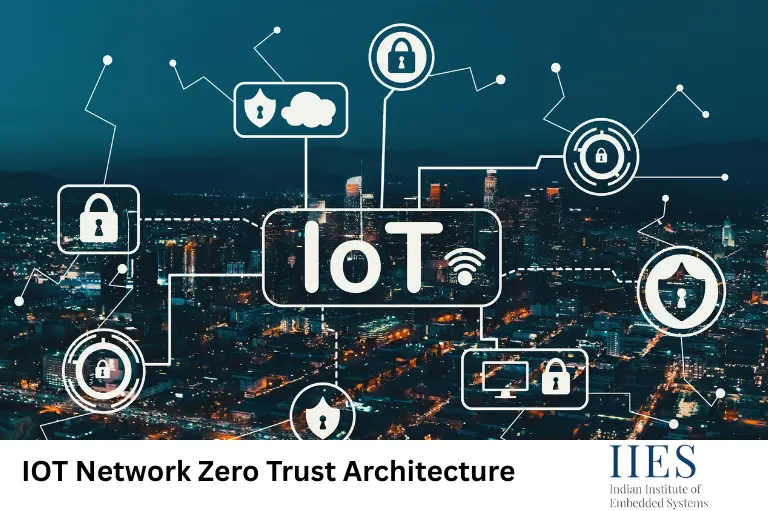
Zero Trust Architecture (ZTA) is a modern cybersecurity framework designed to eliminate implicit trust and continuously verify every device, user, and data request, regardless of their location. In today’s interconnected IoT ecosystem, traditional perimeter-based security models are no longer sufficient to defend against evolving cyber threats. ZTA provides a proactive approach by enforcing strict access controls and continuous authentication across IoT networks.
Zero Trust Architecture for IoT focuses on building resilient systems that ensure device identity management, real-time monitoring, and micro-segmentation to minimize attack surfaces. Understanding ZTA helps developers, network engineers, and security professionals design secure IoT environments capable of withstanding today’s and tomorrow’s cyber challenges.
Zero Trust Architecture (ZTA) is a security model based on the principle of “never trust, always verify.” It assumes that threats can originate both inside and outside the network and that every access request must be authenticated, authorized, and continuously validated. In IoT environments where devices are highly distributed and resource-constrained, Zero Trust ensures each device is verified through IoT device authentication, identity and access management (IAM),and policy enforcement points (PEP).
IoT ecosystems are expanding rapidly from industrial controllers and sensors to consumer devices. However, this growth introduces several vulnerabilities:
Since IoT devices often operate beyond the reach of traditional firewalls, Zero Trust Architecture becomes essential for IoT network protection, risk management, and threat detection.
| Technology | Function |
| Device Identity Management | Ensures each device is uniquely identifiable. |
| Secure Boot | Prevents untrusted software from executing. |
| Trusted Platform Module (TPM) | Provides hardware-level protection. |
| Zero Trust Network Access (ZTNA) | Enables secure remote connectivity. |
| Security Gateways | Enforce network and device-level policies. |
| Network Segmentation Tools | Limit exposure through SDN and firewall rules. |
| SIEM or XDR Integration | Centralized continuous monitoring and alerting. |
| Parameter | Zero Trust Approach |
| Trust Model | Never trust, always verify |
| Primary Goal | Minimize attack surface |
| Key Methods | Continuous monitoring, micro segmentation, and identity validation |
| Focus Area | IoT device authentication and access control |
| Main Challenge | Managing distributed devices securely |
Implementing IoT Zero Trust Architecture is not a one-time setup; it is an ongoing security mindset. It emphasizes identity verification, policy enforcement, and continuous monitoring to reduce vulnerabilities in connected environments. By starting small, focusing on critical devices, automating IoT risk management, and integrating with existing IAM and SIEM tools, you can build a scalable and secure Zero Trust network that ensures long-term protection for your IoT ecosystem.
It is a cybersecurity framework that enforces strict verification of all devices and users in an IoT network before granting access.
By implementing micro segmentation, continuous monitoring, and identity management, it minimizes unauthorized access and lateral movement.
Tools like ZTNA, TPM, security gateways, and IAM systems enable Zero Trust in IoT environments.
Without unique verified identities, IoT device authentication and policy enforcement are impossible.
Yes, industrial IoT security relies heavily on Zero Trust to protect PLCs, sensors, and gateways from unauthorized access.
Indian Institute of Embedded Systems – IIES